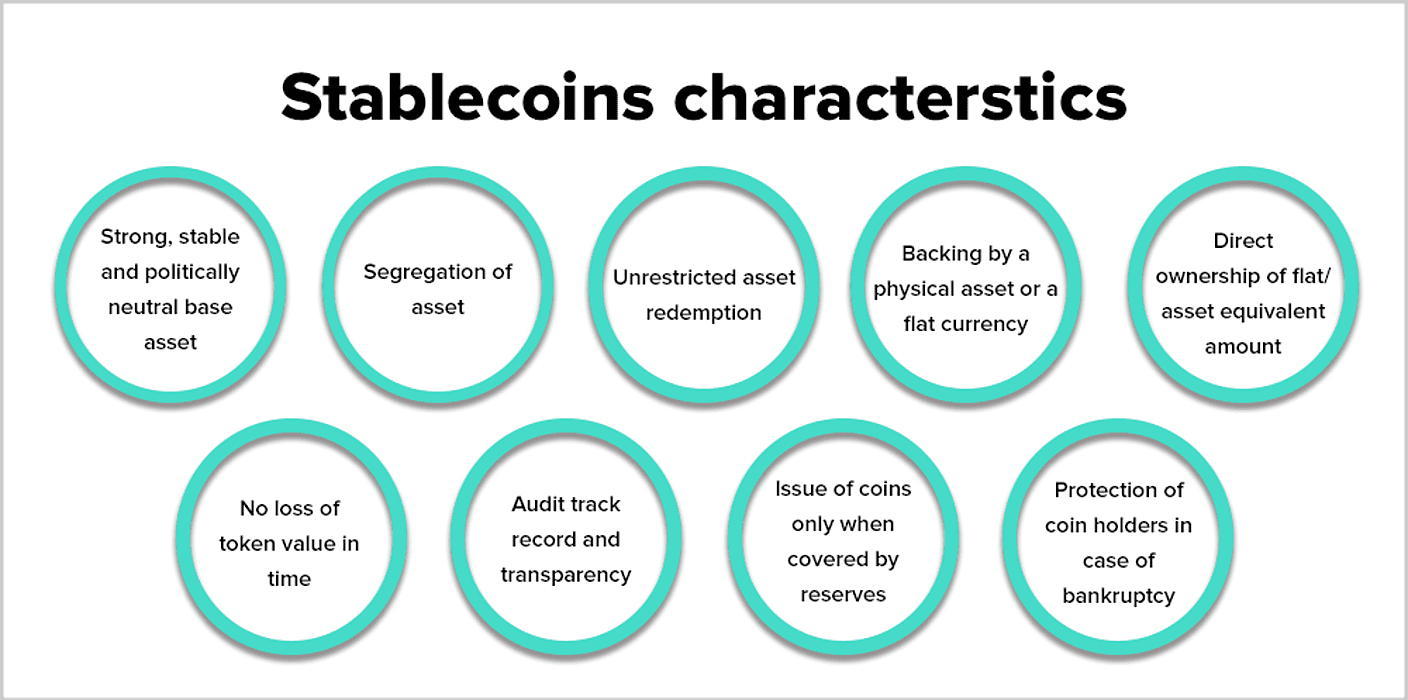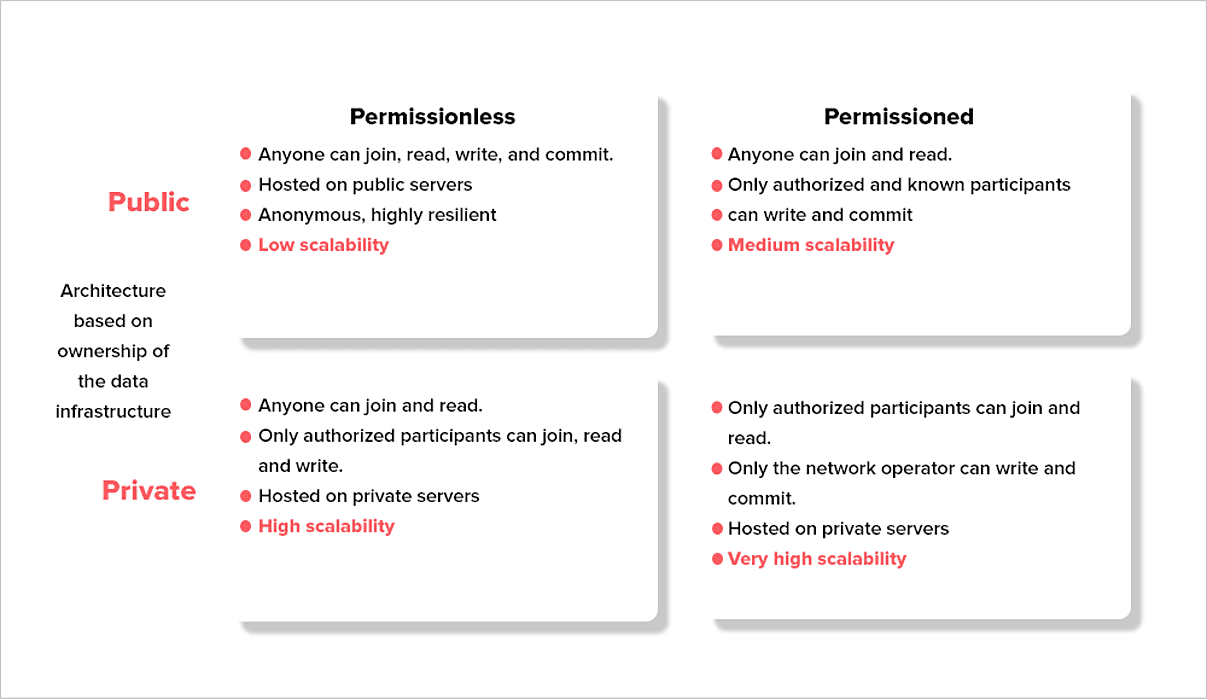
-
Top Blockchain Trends in 2021 that will take over the world
- Dominate the “Crypto” Space with stable coins
- An expected Rise of Federated Blockchain
- Blockchain to realize Environmental, Social, and Governance goals (ESG)
- Blockchain is transforming Social Networking
- Interoperability Among Blockchain Networks
- Streaming Content will be safer with Blockchain
- Blockchain in Real Estate
- Hybrid Blockchains
- Final Thoughts

Blockchain technology first made its official appearance more than a decade ago, in the year 2009. Since then, the world has seen an exponential transformation in this remarkable technology. From the retail sector to the field of Real estate, Healthcare, and Medicine, blockchain technology has made its way into various industry verticals, thus making blockchain trends the most searched keyword.
The future has a lot of blockchain technology’s future scope and applications based on it. Let’s take a look at the top emerging blockchain development trends in 2021, that will shape the future of blockchain.
Top Blockchain Trends in 2021 that will take over the world
The year 2020 brought a lot of applications making use of the latest blockchain technology and 2021 is likely to follow the suit. It is sure to take mobile app transactions and business functioning to newer and unimaginable heights. Here are the top emerging trends in blockchain technology.
1. Dominate the “Crypto” Space with stable coins
Cryptocurrencies are a side product of blockchain technology and are volatile. As of now, stable coins are in their initial phase and it is predicted that 2020 will be the year when blockchain stable coins will achieve their all-time high, thus making them the second most looked forward emerging tech trend in the industry. 77% of the financial institutions adopted this technology as a part of their in-production system or process.

Blockchain Future Applications of Stable Coins
- Additional layers of security from currency crashes: As the name suggests, stable coins are steady and don’t fluctuate that often. It means the user doesn’t have to worry about currency crashes constantly. It also allows users to invest in more cryptocurrencies.
- Fast Remittances and Affordable: The process of sending remittances overseas is now simplified with the help of stable coins. They are also swift and hold the same value as flat coins.
- Streamline Recurring and P2P payments: Making peer-to-peer (P2P) payments is much easier with stable coins. Users can even use them on smart contracts to conduct automated payments.
- More Stable Currency Exchanges: Stable coins can further contribute to stabilizing the market while improving the overall situation of the cryptocurrency market. This will also eliminate additional risks and unnecessary regulations.
- Regular Currency: Stable coins currency can be used regularly as a common currency like Fiat money, along with legal backups. For example, you can use them like any other digital currency for making online purchases.
Limitations of Stable Coins in the future of blockchain technology
- Unstable: The crypto-backed or commodity-backed stable coins can become unstable sometimes due to sudden crashes of the market. This might turn into a huge problem because experts are still working on how to back up stable coins if the value of their assets drops in the real world.
- Trust Issues: Because of the centralized nature of stable coins, users cannot completely trust their system as they still need to prove their applications in the real world.
- Regulations: A majority of coins have the same regulations as that of fiat money and that’s why this statement ultimately clashes with the main objective of cryptocurrencies.
- Centralized: Stable coins operate on a centralized system which contradicts the primary nature of blockchain technology.
2. An expected Rise of Federated Blockchain
The term Federated Blockchain can be referred to as one of the best blockchain latest trends in the industry. It is merely an upgraded form of the basic blockchain model, which makes it more ideal for many specific use cases.
As per experts, there will be a rise in the usage of federated blockchain as it provides private blockchain, a more customizable outlook. For most of the part, federated blockchains are quite similar to private blockchains, with a few added features.
For instance, in this type of blockchain, instead of one organization, multiple authorities can control the pre-selected nodes of the blockchain. Now, this selected group of various nodes will validate the block so that the transactions can be processed further.

Key Federated future uses of blockchain:
- The federated blockchain operates under various authorities instead of following a single secure and highly trusted node.
- Here, the authority nodes are selected previously from different organizations that are connected to this blockchain network.
- The group that is selected will be responsible for maintaining the network and validating the block as well.
- In this network, only the group holds access to inner-restricted areas.
Some blockchain facts of Federated use already in motion:
- Financial Services
- SCM, i.e., Supply Chain Management
- Insurance Claims
- Organizational Records Security
- Multiparty Aggression
3. Blockchain to realize Environmental, Social, and Governance goals (ESG)
Another blockchain trend we expect to see in and after 2021 is its use in achieving the better governance goals of today. In blockchain future technology trends its application in realizing the ESG goals will give investors reason to look forward to this latest technology. Investors will find the ventures to be environmentally conscientious, socially responsible, and governed ethically, in turn helping in the common sustainable development goals.
Already, there are many case studies available supporting this application of Blockchain technology. Context Labs use providence and proved data on the emissions to improve the air quality. One of the future uses of blockchain, this study is facilitated to minimize the carbon footprint of these giant operations.
Some of the best blockchain companies that provide similar use in the future of blockchain applications are Settlement and Copperwire working with organic matters age-old and degradable material like wool and latex.
4. Blockchain is transforming Social Networking
It shouldn’t come as a surprise that social networking has become part and parcel of our daily lives. In fact, according to Statista, it is estimated that by the end of 2021, there will be around 3 Billion social media users around the globe.
The introduction of blockchain in social media will be able to solve the problems related to notorious scandals, privacy violations, data control, and content relevance. Thus, the blockchain blend in the social media domain is another emerging technology trend.
With the implementation of blockchain, it can be ensured that all the social media published data remain untraceable and cannot be duplicated, even after its deletion. Moreover, users will get to store data more securely and maintain their ownership. Blockchain also ensures that the power of content relevance lies in the hands of those who created it, instead of the platform owners. This makes the user feel more secure as they can control what they want to see.
5. Interoperability Among Blockchain Networks
Blockchain interoperability is the ability to share data and other information across multiple blockchain systems as well as networks. This function makes it simple for the public to see and access the data across different blockchain networks. For example, you can send your data from one Ethereum blockchain to another specific EOS blockchain.

Benefits of Interoperability Between Blockchains
- Blockchain interoperability makes it easy and simple for users to transact from one blockchain to another.
- This function also offers a range of diverse functionalities, for example, cross-chain transactions.
- Interoperability also enhances multi-token transactions with the development of multi-token wallet systems.
Noteworthy Vendors of Blockchain Interoperability
- Blocknet: Blocknet is a project that is constantly striving to build a decentralized exchange in a bid to exchange interexchange communication.
- Wanchain: Project Wanchain is mainly about leveraging cross-chain capabilities to enhance the connection between consortium, private, and public blockchains.
6. Streaming Content will be safer with Blockchain
Content Streaming is one of the emerging blockchain technology trends of 2020 that will be highly popular in upcoming years as well. Movie streaming services like Hulu and Netflix can incorporate this technology and its solutions to store user data in a more secure and easily accessible manner.
There can be many other applications of blockchain solutions for its properties, like interoperability, federated blockchains, etc. Such video, music, and social media streaming companies can also opt for a similar API of blockchain technology that will enable third parties to read and even write information on the respective blockchain itself.
7. Blockchain in Real Estate
Blockchain has impacted the real estate industry in more ways than one. Among blockchain latest trends, one of the goals is to remove the age-old limitation of the real estate industry and enable players from all over the world and all kinds of investment backgrounds to be able to participate in the niche industry, which was kept only for local players with huge investments.
Blockchain services will also play a crucial role in cutting the intermediaries from the process and will bring the buyer and seller face to face. The absent trust will be compensated with the robustness of the blockchain and its ability to retain its value.
Last but not the least, Blockchain will facilitate the fractional ownership of the property which can only be a dream till yesterday. With its abilities and easy shareability, a fractional ownership will be a reality, enabling millions of fractional investors around the world, playing crucial roles in the real estate industry.
8. Hybrid Blockchains
The next step in the future of blockchain technology is hybrid blockchain, which can be simply defined as the blockchain that attempts to use the most appropriate part of the public as well as private blockchain solutions.
If we opt for an example of an ideal world scenario, then hybrid blockchain will be mainly controlled across various platforms. On the other hand, there are some authorities for whom the processes are stated as private, while for the others, they remain public.

Advantages of Hybrid Blockchains
- Transaction costs are much lower as the influential nodes in the network make the process simple and quick to verify transactions.
- Hybrid blockchain operates in a closed ecosystem so that every piece of information remains secure on the network.
- As per the report, it also protects from more than 50 percent of attacks as hackers are unable to gain access to the blockchain network.
- Here, the user has the option to change the rules when there is a requirement.
- Hybrid blockchain also helps in maintaining the confidentiality of a project while communicating with the outer world.
Final Thoughts
Looking at all these recent blockchain technology trends, one can say that the year 20120 will be quite a significant time for this emerging technology in various industries. There's no denying the fact that the technology of blockchain is likely to impact many different industry verticals differently.
Other than this, we’ve also released a report on the top blockchain app development companies in 2024. Our report is based on real-time data that our team of experts compiles after hours of research.
Frequently Asked Questions
-
What is blockchain technology and how does it work?
Blockchain is "an open, distributed ledger that allows the transactions between two parties and generate a public key and a private key. The combination of these two keys further authenticates the transaction.
Blockchain stores all the data of the transaction done over its network and then, it authenticates every transaction whenever a new transaction is made. This way, it becomes the best blockchain platform.
-
What is blockchain good for?
-
How many types of blockchain are there?
-
What is blockchain technology used for?
-
What are the three pillars of blockchain technology?
-
Who controls the blockchain?















